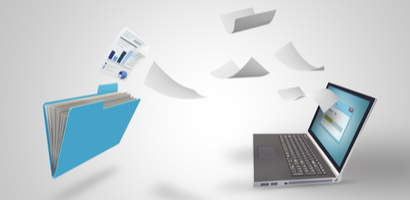
•
The Paperless Era is Here
Whether you like it or not, the world is slowly inching towards a paper-free workplace. I’ve been involved in a few projects recently where the entire management team had unanimously decided that they have had enough of binders and wanted to take their documents entirely online! As recently as a few months ago, RefineCo emancipated an entire Board of Directors of a large company from the clutches of 2-pound binders, pens and sticky notes by offering an entirely different way to hold a board meeting — paperless…and they are loving it!
This is nothing new. Companies have been slowly moving their files online for the last decade. I mean, you know that when the US Library of Congress goes digital that paper is really a thing of the past. So what is the big deal? Well there are three important agents of change that are shutting binders all around the world:
1. The Commercialization and Commoditization of the Tablet
Four years ago, Apple took a huge commercial risk by introducing the iPad, which is pretty much the first usable and responsive tablet that was ever created. At the time no one knew how the market would react. Well, as we all know, now everyone has a tablet! What’s more interesting is that it took the commercial world about 2 years to get used to the idea. Now we are seeing tablets pop up all around offices, being used as a standard work tool.
But there is one snag. Tablets are not laptops. Aside from the Microsoft Surface, which is still on trial by the public, you cannot just install Visio and start making diagrams and workflows, etc. These things run different hardware that is very battery friendly. They also have a different input method: your fingers. So, software has to be written with those two factors in mind.
Fortunately, the web consortium (W3C) responded with CSS3/HTML5 and now we have tablet friendly web pages all over the place. If done correctly, these will shrink and fit into any touch device and will be intuitive enough for you to use with just your finger motions. So you see, using a tablet with the right software can eliminate your need to use paper altogether. Both for capturing information…and here comes the segue…for recalling it.
2. Information! Here! Now!
Let’s start with a little history lesson to get some context here. We, as people, don’t know much about the world before roughly 3200 BC. That’s because no one wrote anything down! Yeah, we’ve discovered Mummies and buildings older than that, but we chalk it up to “lost civilizations”, etc. So when people actually began capturing information, this is when humanity as a whole began to accumulate knowledge. Each generation was smarter than the last, and so on. Then another big information revolution happened in the 1930s in Germany. As alluded to by Noam Chomsky in his 1992 book Chronicles of Dissent, Germany was one of the first countries to keep statistics on literally everything you can possibly think of (albeit for the wrong reasons of course). What Mr. Chomsky tells us is that after the war the Americans adopted a similar approach – but used the vital statistics and details for the purpose of improving our quality of life. Today, this is standard procedure in the public sector and with very large organizations.
What about the smaller organizations? The world is becoming more competitive and as the old, tired phrase says, “information is power”, so why are so many small organizations today not collecting statistics about efficiency, process, people, costs, etc. This is where the modern Dashboard and Search comes in. Having your files “digitized” is standard today. Locating and interpreting this information is still somehow a challenge.
Enter SharePoint. You can load it full of files, set up workflows, use FAST/Enterprise Search to index them, and then use an assortment of Dashboards to show you conclusions and trends. It really is just a matter of you deciding what is important, and then like the generations before you, using that information to keep your organization on the right path by making informed decisions that mitigate risk.
So…in case you thought I went off topic, nothing in this section involves paper! Ideally you use your tablet to review trends in your organization, locate the digital file you need, then input/adjust information. No notebook required.
3. Environmental Impact
Paper is expensive. Ink is expensive. Believe it or not, recycling paper is expensive too! The 1990s were all about saving trees, but it really comes down to saving energy by not using printers in general. Not to mention, recycling ink cartridges and even the printers themselves has a significant environmental impact. But this is nothing that you don’t already know.
So let us summarize what we’ve learned: The introduction of tablets helps us with removing the antiquated file and paper-based processes from our organizations. Because we are forward thinking, we can also use it to search, view statistics in the form of dashboards, and enter information right into our application. For that, we need a proper portal (like what SharePoint mostly offers out of box) a well tuned search engine, and all our information and workflows online. All the while, we are saving trees, plastic and energy!


